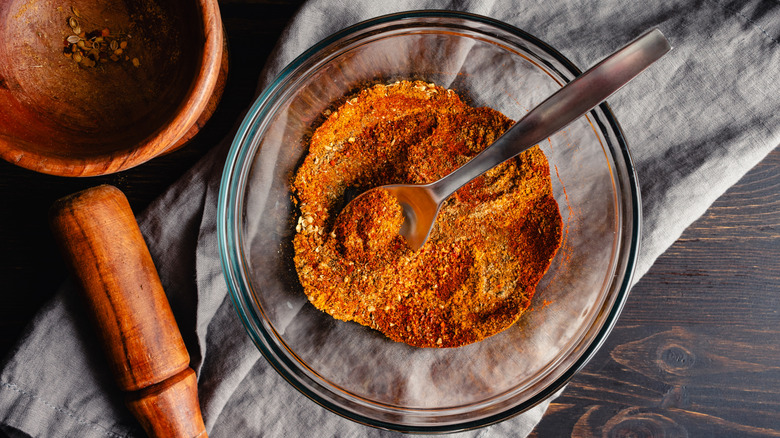How Much Heat Berbere Spice Adds To Ethiopian Food
Berbere spice is at the heart of many classic Ethiopian dishes, giving the cuisine its bold signature flavor. This red seasoning blend is a mix of spices like chile peppers, paprika, ginger, fenugreek, garlic, cardamom, and various warming spices such as cinnamon or nutmeg. Berbere delivers a moderate heat level that balances things out quite beautifully with its complex, slightly sweet, and aromatic undertones. It's not the kind of spice that immediately overwhelms your palate with fiery intensity like cayenne pepper can often do. Instead, it brings a more gentle heat that lingers, enhancing the dish without completely dominating it. From my experience, yes, you can still feel it on your tongue, and it does take some getting used to the first few times, but overall, you don't feel like your mouth is burning.
In traditional Ethiopian cooking, berbere serves as a foundation for many popular stews and sauces, really displaying its depth when combined with slow-cooked meats, legumes, or vegetables. Chile peppers in the mix provide warmth, but the sweetness of cinnamon or the earthiness of fenugreek helps keep the heat approachable. It's a reminder that in Ethiopian cuisine, flavor is layered and intentional; heat is only one part of the experience. For those new to the cuisine, berbere may be "spicy" in the sense of being flavorful and vibrant, but it usually won't reach the punishing heat levels of something like fresh Thai chiles.
How berbere adds warmth to traditional Ethiopian dishes
You can use berbere spice in a lot of different ways. You don't just sprinkle it onto dishes (you can definitely use it like that, though), but it's at its best when incorporated deeply into the cooking process. In Ethiopian kitchens, the spice blend is typically toasted or bloomed in hot oil or clarified butter (niter kibbeh) to release its full aroma before being combined with other ingredients. This technique transforms raw spice notes into a fragrant, slightly smoky, slightly spicy flavor that permeates the entire dish.
One of the most famous applications of berbere is in doro wat, Ethiopia's national dish. Chicken is simmered in a sauce of onions, garlic, and tomatoes, enriched with berbere, creating a stew that's rich, savory, and moderately spicy. Misir wat, a red lentil stew, also relies heavily on berbere for its deep color and subtle heat. In both dishes, the spice adds warmth that builds with each bite but rarely crosses into overwhelming territory.
Berbere is also a primary component in dry rubs for meats or as a seasoning for vegetable dishes. Some chefs even mix it with a touch of oil or honey to glaze roasted vegetables, giving them a moderately spicy, aromatic finish. Its heat is nuanced in that it warms your palate as opposed to shocking it. When you pair the spice with injera, the spongy Ethiopian flatbread, berbere-based dishes become a perfect mix of tangy, spicy, and savory flavors.
Tips for enjoying berbere without overwhelming heat
For those trying Ethiopian food for the first time, keep in mind that you might have to build up a tolerance if you're not used to spicy foods at all. If you're making Ethiopian-inspired dishes at home and want to control the heat, start small — about a teaspoon in a stew or sauce — and taste as you go. Adding more gradually allows the spices to bloom without creating an overpowering burn, so that you can ease into it anyway.
Another tip is to pair dishes with berbere in them with cooling accompaniments. Traditional Ethiopian meals are almost always eaten with injera, which has a slight tang from fermentation and helps mellow the spice's heat. Dairy-based sides, like a spoonful of yogurt or fresh cheese (ayib), can also tone down the heat for those who are especially spice-sensitive.
If you love flavor but want to avoid too much heat, you can make your own berbere blend with milder chiles. Many commercial mixes are already balanced, but making it yourself with all the ingredients is even better. Once you try it, you'll no doubt be hooked.


